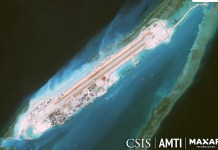Militaries worldwide expect pinpoint accuracy in positioning, even in the most volatile battlefields, when using the Global Positioning System (GPS). While the US has been leading in the Global Navigation Satellite System for a long time, China’s and the European Union’s systems are evolving very strongly and may have even better coverage now.
Moreover, the threat of counter space, electronic warfare (EW), cyber weapons for navigation warfare (NavWar), and the criticality of GPS in the kill chain have made the US look for backup. An adversary can jam GPS signals, take out some or all of its 30 GPS satellites, or distort signals.
GPS is how the USAF delivers precise punches against its enemies. Every weapon that the Air Force drops worldwide is guided by GPS.
Considering its criticality, the Department of the Air Force has selected an alt-PNT (alternative Positioning, Navigation, and Timing) project as a new “quick start” program that allows it to pursue the project without Congressional approval.
In September, four companies were selected to compete to develop Resilient GPS solutions. Under this endeavor, the US Space Force intends to launch eight small satellites by 2028.
The project has been criticized for focusing solely on new satellites instead of jam-resistant encrypted M-code signals for military operations. However, the military has resisted the congressional criticism, saying the new satellites will rely on different orbital regimes.
The PNT system will have satellites in low-Earth (LEO) or geosynchronous orbits alongside medium-Earth orbits. This has an advantage as LEO satellites are closer to the Earth, enabling a strong signal, and GEO satellites benefit from constant, steady overhead presence. This will add to the resiliency as it won’t be in the same planes as GPS, granting the system ‘orbital diversity.’
Commercial entities are also interested in an alternative PNT constellation. Airline operators have recently suffered greatly from signal jamming in areas near Ukraine and the Middle East. The alternate system will be in addition to the GPS, which gives three-dimensional position, velocity, and time 24 hours a day in all weather.

The Future Of GPS
GPS is owned by the US Government and operated today by the US Space Force. It is freely accessible by anyone with a GPS receiver and has irreversibly changed the face of military operations and civilian navigation.
Its first use in military operations was during the Persian Gulf War in 1991, before it was fully developed, and since then, it has become an important part of military warfare.
During Desert Storm, the GPS constellation was limited, with 19 satellites of various generations: GPS I, GPS II, and GPS IIA. These only allowed for 19 to 20 daily hours of 3-D coverage. GPS became fully operational on April 27, 1995, with a complete constellation of 24 operational Block II/IIA satellites. It provided information to both military and civilian users.
In recent years, with adversaries experimenting with the jamming of GPS signals, the USAF has been conducting “day without space” exercises in which participants don’t have access to GPS signals and must resort to more old-fashioned methods of navigation and target identification.
The US is also working on modernizing and expanding GPS technology by launching satellites under the GPS IIIF project, which is due to be completed in 2026. The satellites will provide regional military protection (RMP) with a boosted M-code signal, M-code power, resilience in disadvantaged areas, and a search and rescue (SAR) payload.
The m-code is a military signal that improves security and has anti-jamming properties. RMP will provide 60X greater anti-jamming capabilities. This will enable uninterrupted GPS access to the US and its allies in hostile environments. Once the program is fully implemented, all satellites will be equipped with NDS (Nuclear Detonation Detection System) technology, allowing them to pinpoint nuclear activity more accurately.
US GPS vs Chinese Beidou
Currently, China’s Beidou and the European Union’s Galileo satellite navigation systems are more accurate and/or provide better coverage in parts of the world than GPS.
Indeed, the US National Space-based Positioning, Navigation, and Timing Advisory Board have repeatedly underscored that “GPS’s capabilities are now substantially inferior to those of China’s Beidou.”
China’s system has the advantage of a larger satellite constellation, more ground antennas, signal post-processing, and a text messaging service for communications, making it better than GPS, Galileo, and Russia’s GLONASS satellite navigation system.
The US does not have a reliable and resilient terrestrial backup to GPS, while China, Russia, and other nations do have backups for GNSS services. In case of a mass outage of GPS services, the US’s critical infrastructures, essential national functions, and military forces are at greater risk.
In the current war in Ukraine, Russia has upped the ante by developing Anti-Satellite (ASAT) missiles capable of destroying GPS satellites. This could take the punch out of NATO’s long-range weaponry. Russia has a backup of its GLONASS system. It has revitalized a preexisting radio navigation system known as Long-Range Navigation (LORAN).
LORAN, developed during World War II, is a hyperbolic radio navigation system. Unlike GNSS systems, LORAN calculates a receiver’s position based on the time difference between signals emitted from three or more synchronized ground stations.




